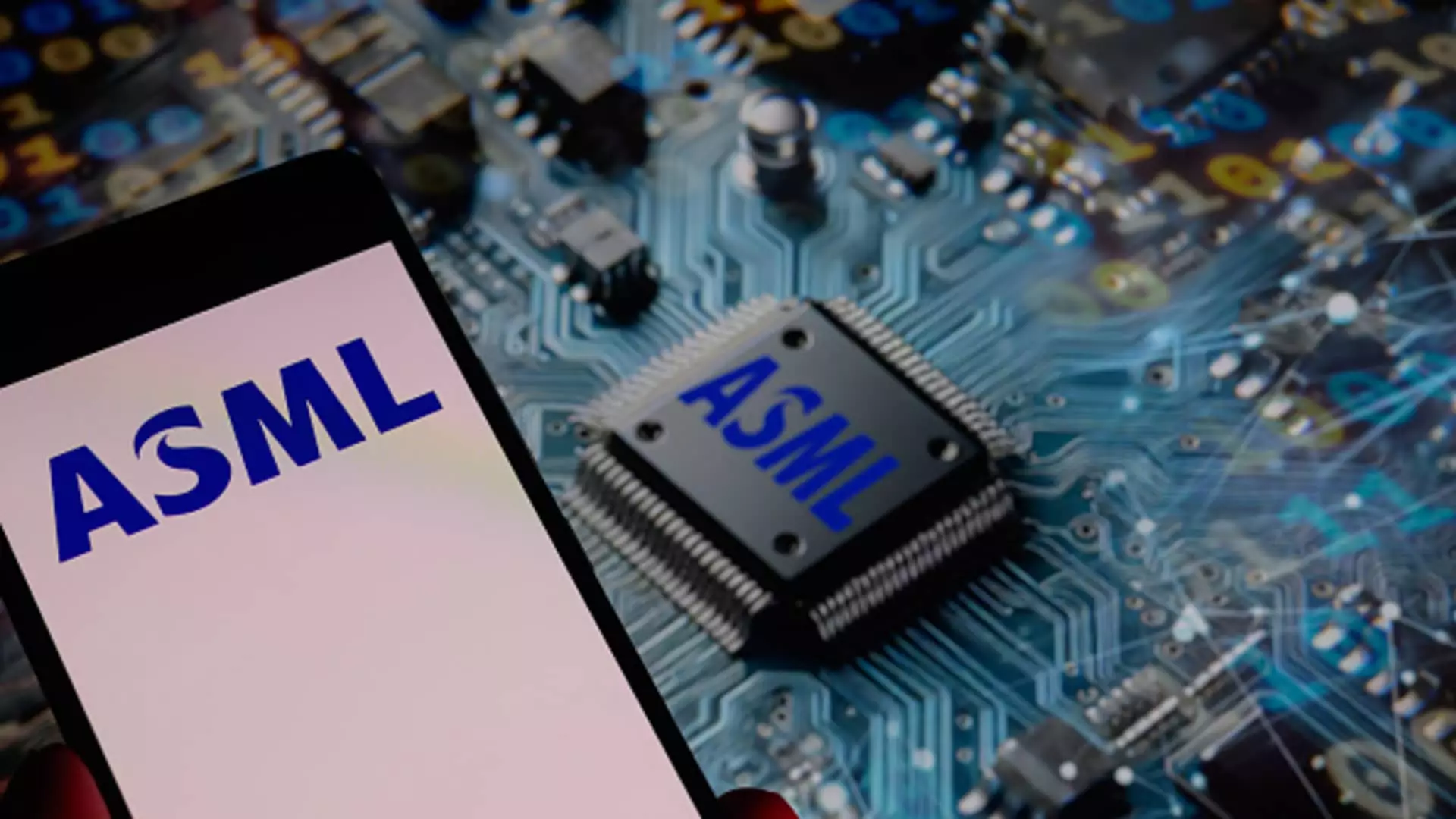In the wake of ASML’s recent financial disclosures, the company projects a misleading facade of resilience and growth. While it modestly surpassed expectations in the second quarter—reporting revenues of €7.7 billion against a predicted €7.52 billion, and net profits of €2.29 billion versus €2.04 billion—the optimism veils an unsettling truth: the company’s outlook for future growth is fraught with ambiguity and potential stagnation. The glimmer of a positive financial report should not distract us from the systemic risks faced by ASML, nor from the broader pressures that threaten to stall its trajectory.
It is tempting to interpret this quarterly beat as a sign of robust demand and technological innovation. Indeed, ASML’s ability to secure higher net bookings, totaling €5.5 billion—well above the anticipated €4.19 billion—indicates a healthy backlog of orders, particularly driven by upgrades and the surging demand for AI-related chips. Yet, these figures merely camouflage the larger question: how sustainable is this impressive short-term performance amid growing geopolitical and macroeconomic turbulence?
Challenging the Narrative of Continuous Growth
More troubling than the current numbers is the company’s cautious stance on 2026, marked by a stark warning from CEO Christophe Fouquet: “While we still prepare for growth in 2026, we cannot confirm it at this stage.” Such candid admission underscores a foundational insecurity that dominates the tech landscape—uncertainty fueled by unpredictable geopolitical developments and trade policies, especially from the United States.
ASML’s core technology, extreme ultraviolet lithography (EUV), is at the heart of the semiconductor industry’s future. Its flagship High NA EUV machines represent the pinnacle of innovation, yet they also embody the high costs and geopolitical entanglements that threaten to undermine long-term growth prospects. Shipping just one High NA tool in the second quarter exemplifies both the nascent stage of this technology’s deployment and the risks associated with large-scale production and adoption. This paradox—where cutting-edge innovation does not necessarily translate into immediate growth—is emblematic of the fragility within the industry, a fragility that ASML, as a key supplier, cannot ignore.
The broader economic and political climate compounds these challenges. US tariffs and export restrictions tighten their grip on the industry, restraining supply chains and stifling expansion opportunities. These policies serve as both a barrier to entry for new competitors and an obstacle for existing players aiming to scale. It is paradoxical that a company as technologically advanced as ASML faces limitations from policymakers whose actions inadvertently hinder the very growth they seek to protect.
The Illusory Promise of Innovation in a Volatile World
Furthermore, ASML’s dependency on AI-driven demand signals a double-edged sword. While AI has been heralded as the new catalyst for massive growth—propelling demand for faster, smaller chips—the reliance on such a singular driver is inherently risky. Technological revolutions often stumble upon unforeseen obstacles, and market saturation or a slowdown in AI chip deployment could swiftly diminish future sales.
The company’s venture into High NA EUV technology is perhaps the most telling. These machines, costing over $400 million each, symbolize the expensive leap towards future capability, yet their limited shipment in the recent quarter highlights how innovation is hamstrung by scaling hurdles and geopolitical risk. Relying heavily on a few monumental breakthroughs for growth leaves ASML vulnerable, especially when external factors threaten to stymy demand.
It’s worth questioning whether ASML’s optimism is rooted in genuine sustainable growth or in a carefully curated narrative designed to placate investors. In reality, the company’s cautious language about 2026 indicates a recognition that the industry’s future is far from certain. It suggests that, without significant policy shifts or technological breakthroughs, ASML could well face a future where its growth stalls, leaving its current achievements as little more than temporary reprieves in a challenging landscape.
The Stark Reality Behind the Illusory Optimism
While the headlines celebrate today’s financial beat, they conceal the underlying fragility that threatens to undermine long-term prospects. The semiconductor industry, traditionally cyclical and heavily influenced by global geopolitics, is entering a phase where technological dominance no longer guarantees sustained growth. ASML’s position as an essential supplier is both a strength and a vulnerability—it makes them a valuable player, yet exposes them to risks beyond their control.
ASML’s current narrative—one of technological prowess and market demand—appears to be an optimistic veneer masking deeper concerns. If recent geopolitical tensions escalate or macroeconomic conditions worsen, those high margins and record bookings could evaporate as quickly as they appeared. The industry’s dependence on complex, expensive, and politically sensitive infrastructure amplifies these risks.
ASML’s latest report offers a deceptive glimpse at a company that appears to be thriving, but in reality, is navigating treacherous waters. Its so-called growth is supported by short-term demands, and its long-term outlook hinges precariously on unpredictable external factors. The illusion of technological and market dominance risks crumbling under the weight of economic uncertainty and geopolitical conflict, revealing a future far less assured than the current headlines suggest.

